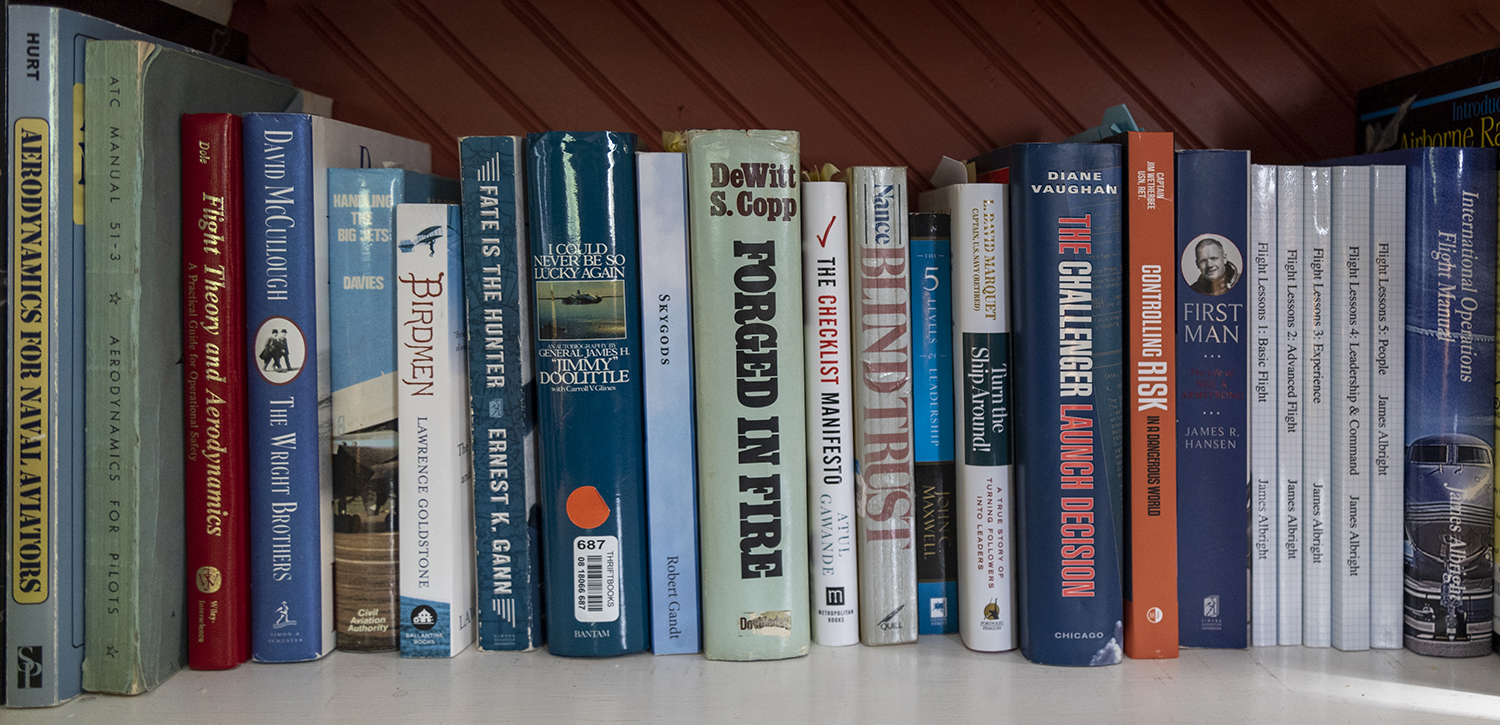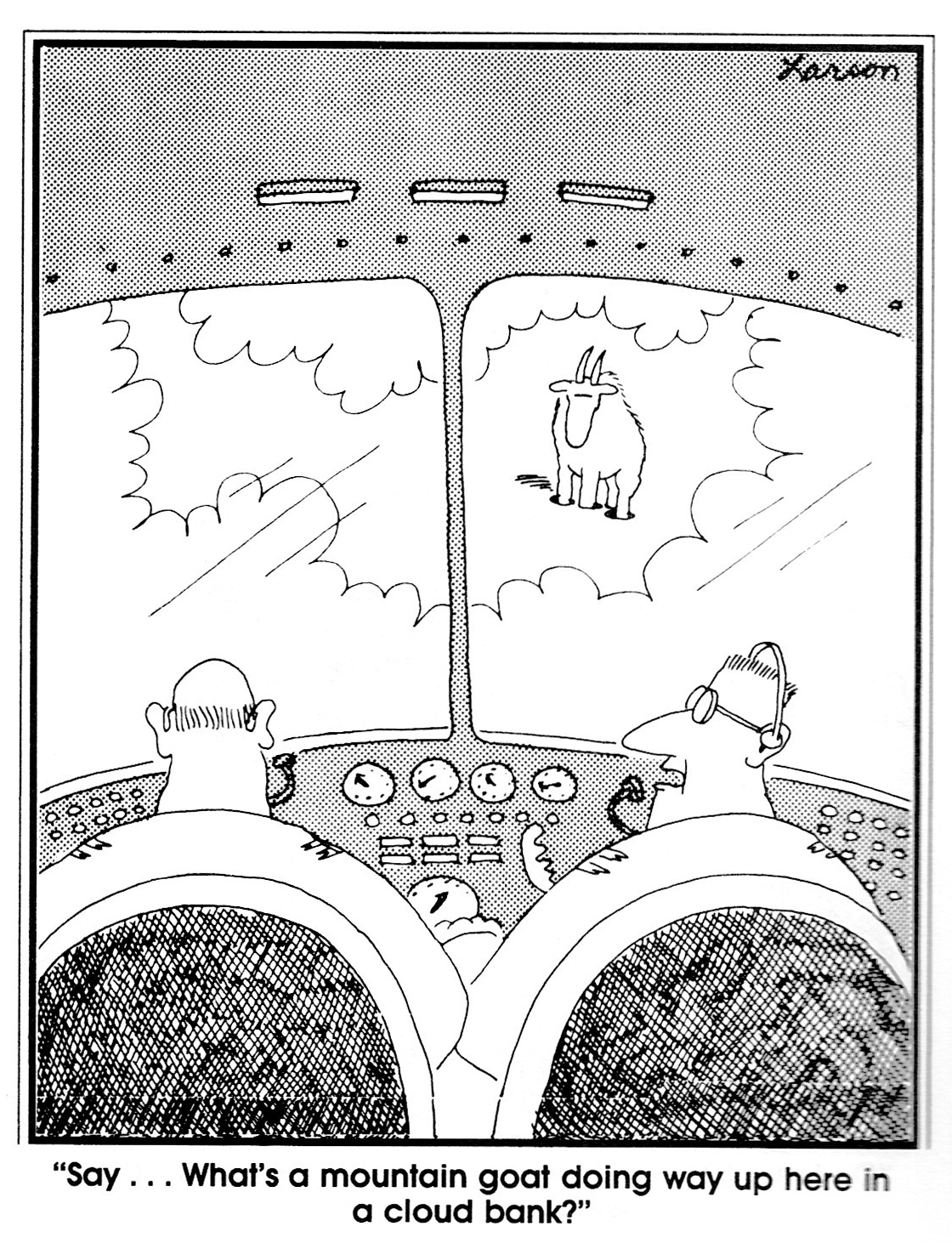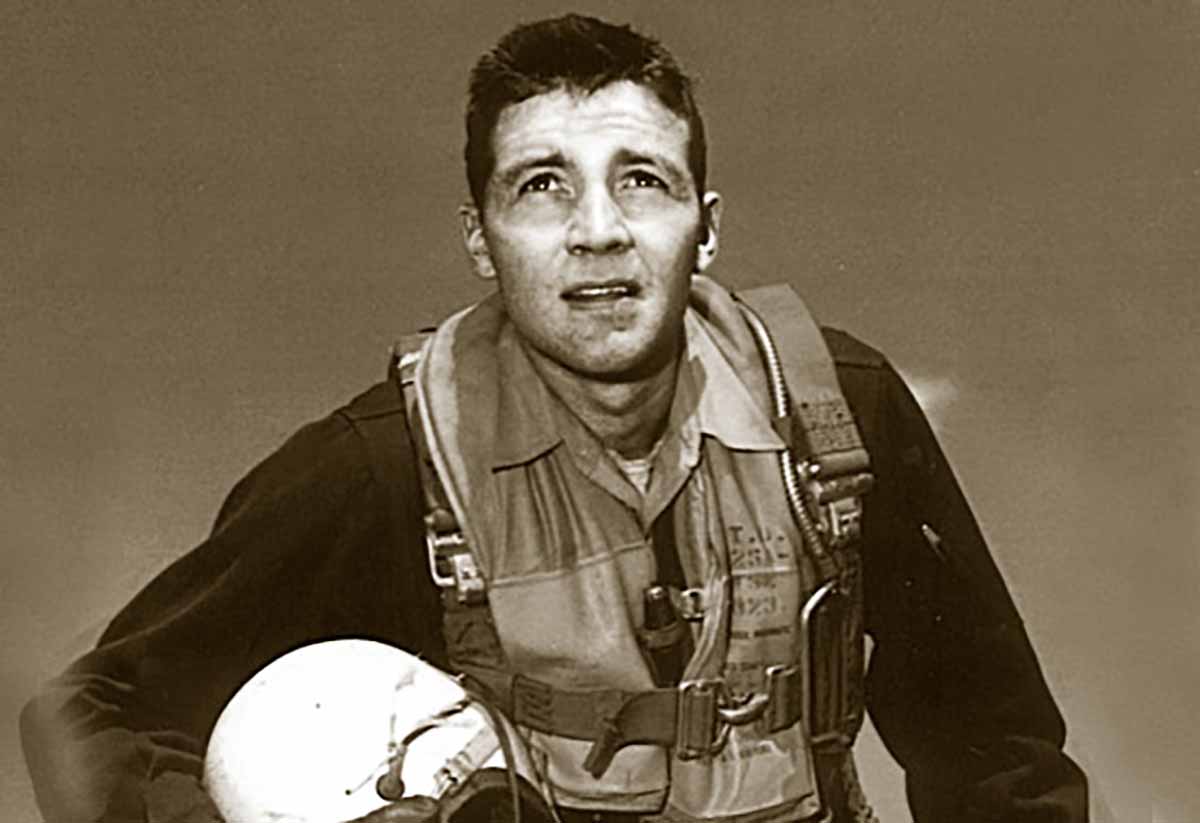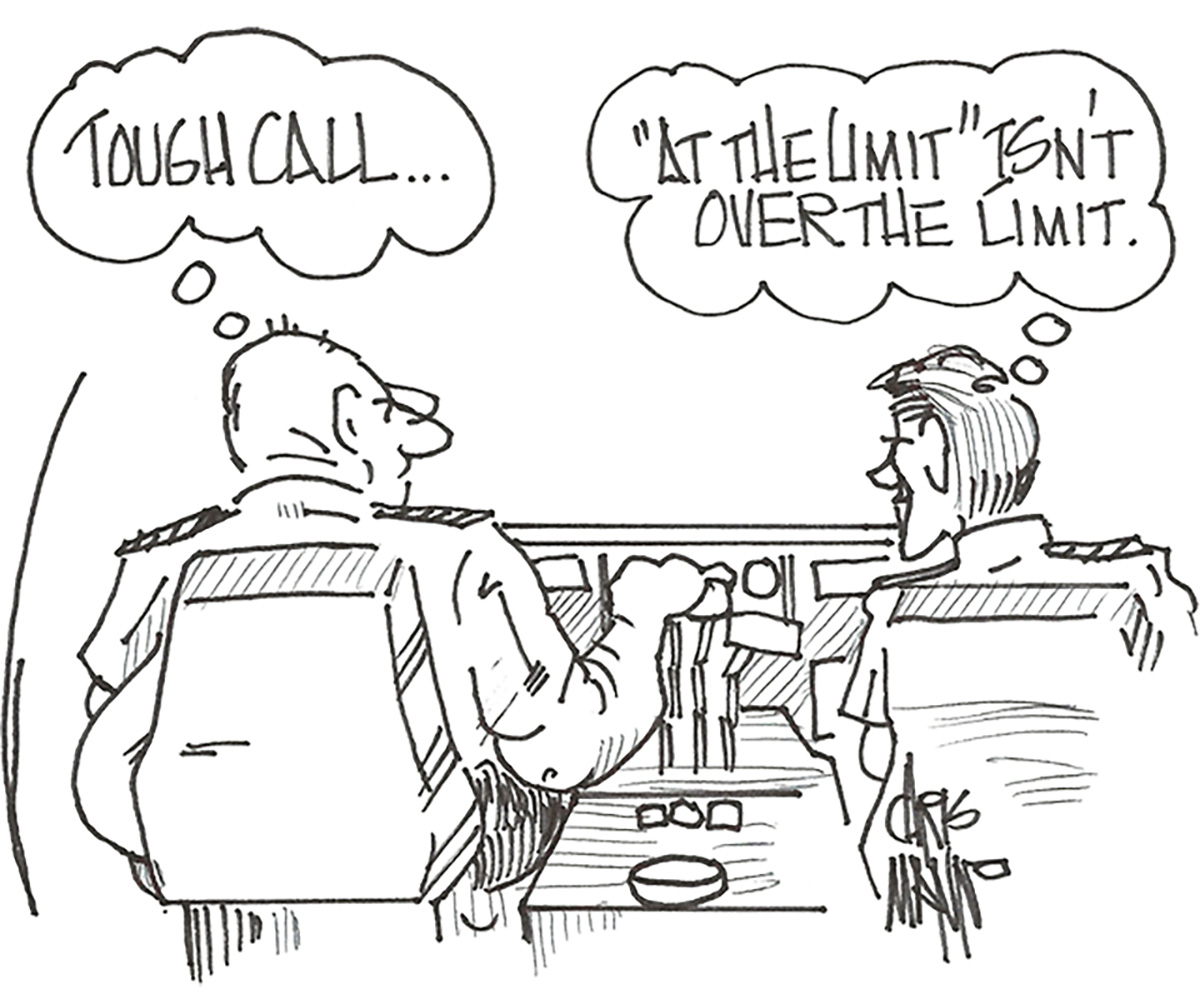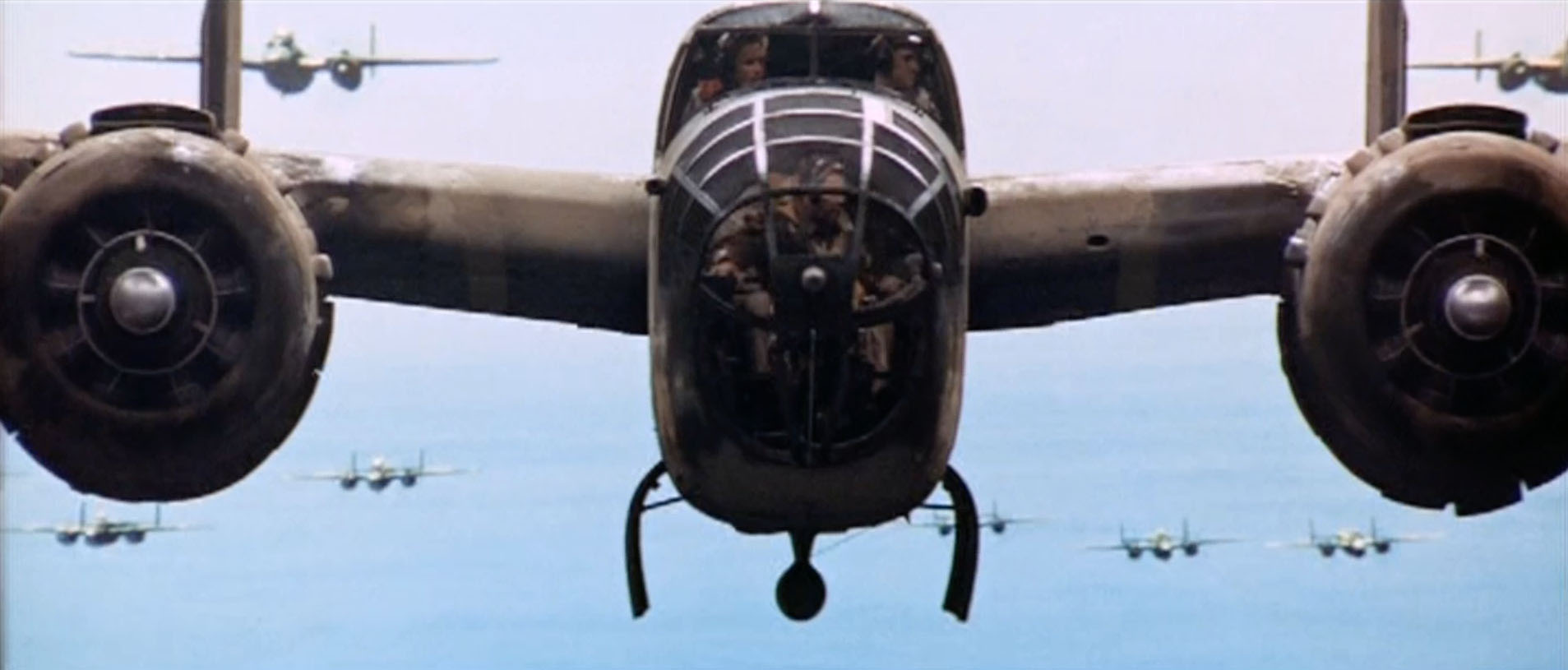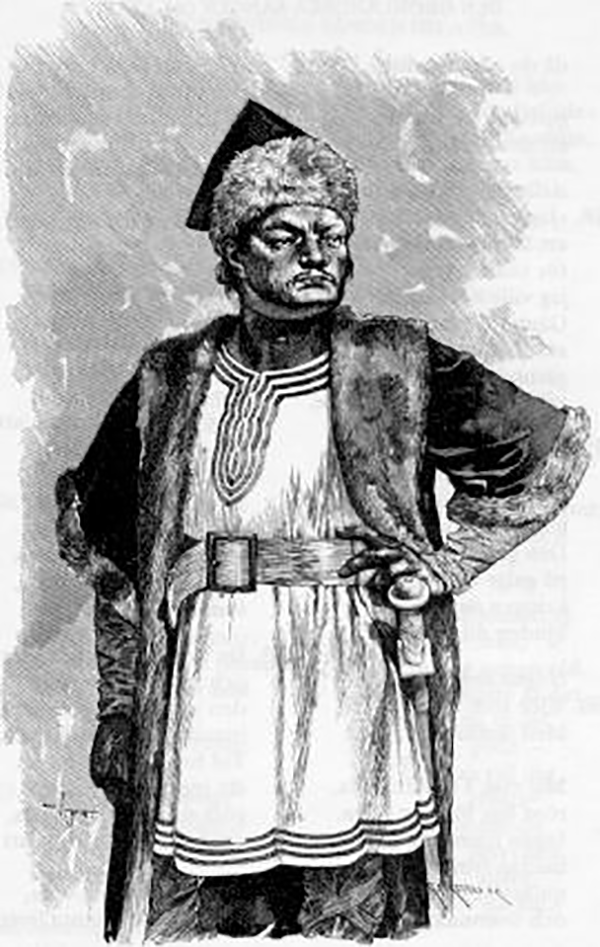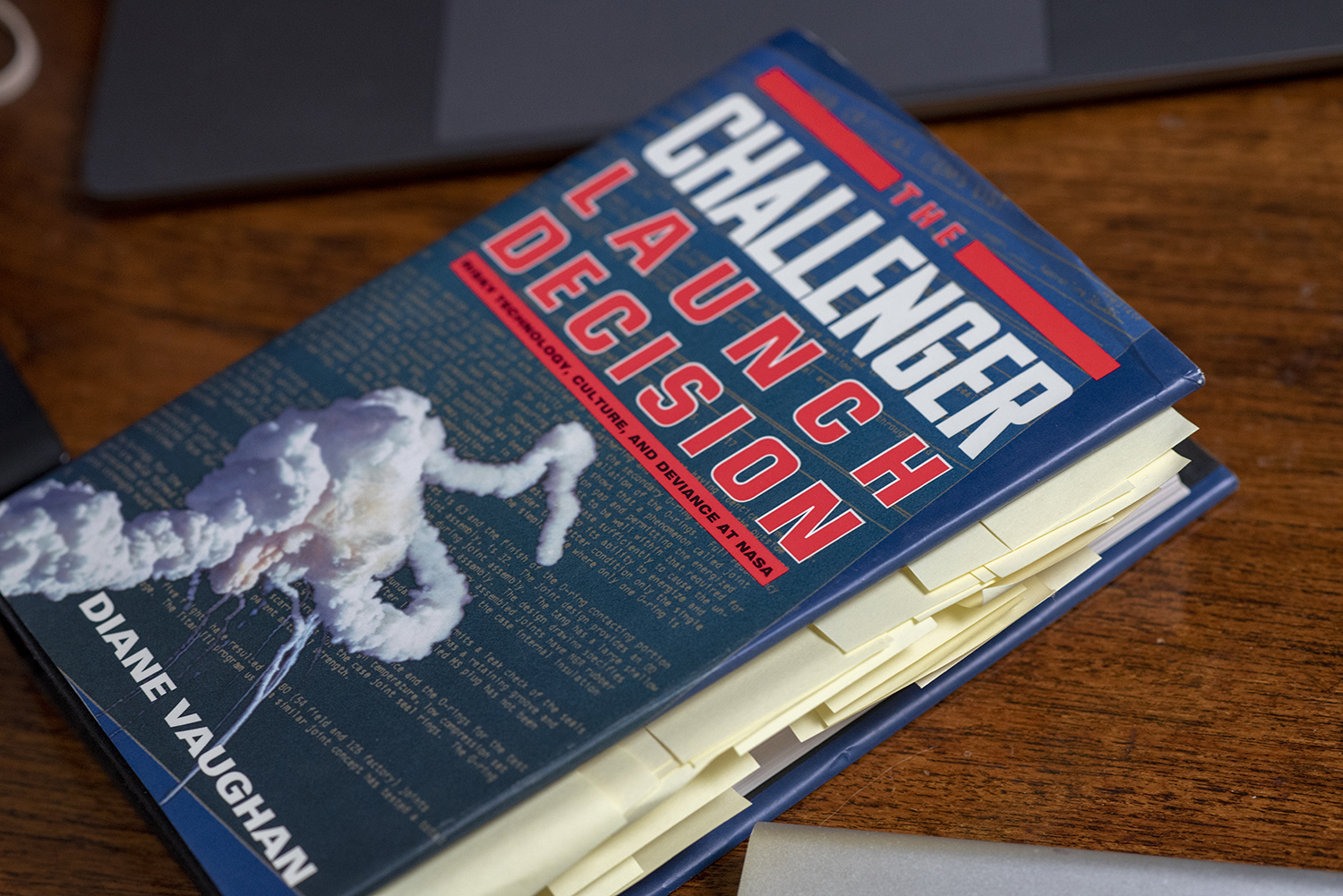I do tend to read a lot and, I must admit, the focus tends to be on aviation. I've been asked many times to provide a top ten list, but I'm not sure how much good that would be given that what interests me may not interest you.
— James Albright

Updated:
2023-02-06
I first put out this page as several lists by category, and that still follows. But I got a few letters asking me to prioritize everything in just one list, so I'll start with Where do I start?.
What amazes me is that every now and then I find something that was written a very long time ago that I've only recently heard of, and that particular book becomes a favorite. So if you know of something I've missed, please let me know.
There are also, of course, the entire Flight Lessons series, the book about International Operations, and "The Brothers Bellum". More about that: My Books.

1
Where do I start?
Dear James,
I was thrilled to see your list of recommended reading but the a little overwhelmed. I want to start my own aviation library and would like a hint on where to start. I am a professional pilot who agrees with you: the learning never stops.
I will appreciate a list of "where to start."
Signed,
Future Aviation Library Enthusiast
Dear Enthusiast,
What a great idea! If I were starting over, looking for the books that I value the most, I think I would blend the aeronautical with the biographical and history. Keeping technical can get wearing, so it is useful to learn from the people who came before us. Here goes . . .
Signed,
James
Aerodynamics
— If you are already a professional pilot, or you are an aspiring professional pilot, you should have a good book on aerodynamics. I have three. You may struggle going through any of them from cover-to-cover, but you can digest them a few pages at a time while keeping them as reference as questions come up. All three spend a fair amount of time dealing with supersonic flight and fighter aviation, but there is lots there for everyone else too. You don't need all three, in fact, you can only get two of them readily and only the first that I list is easily obtainable:- Aerodynamics for Naval Aviators, H. H. Hurt Jr. You can buy this new for $14.49.
- Flight Theory and Aerodynamics, Charles E. Dole This one is harder to get, the going price is $76.24. I got mine in an Air Force aerodynamic engineering course many years ago and read it before Aerodynamics for Naval Aviators. Most of one book can be found in the other.
- Aerodynamics for Pilots, USAF Air Training Command Manual 51-3. I've seen this on eBay now and then and it is a nice snapshot of how my generation of pilots learned this stuff. If you see it, I think it is worth having.
Early History
— You cannot truly understand aviation without understanding the history of powered flight. I do enjoy Biographical books of aviators who have come before us. Most of us understand that starts with the Wright Brothers, but there is someone else who had a role to play that ended up being even greater. I recommend you read about the Wright Brothers first and admire how they got it done but wonder how they lost the initiative. Then dive right into the second, because Glen Curtis was a pioneer who deserves to be a household name.- The Wright Brothers, David McCullough You can buy this for around $10. I think the author was too kind to the Wright Brothers, but I guess that is fitting in what ended up as quite a romantic story.
- Birdmen: The Wright Brothers, Glenn Curtis, and the Battle to Control the Skies, Lawrence Goldstone This is available for around $15. This will give you another perspective and an appreciation for how aviation never stays static.
Aerodynamics for Large Aircraft
— This book taught me what I needed to know to graduate to large aircraft. These days the rite of passage from medium to large aircraft does not enough stress on the complications introduced by inertia and large mass on aircraft. It was written in awe of early jetliners and that part of it can seem a bit silly these days. But the book remains one of the best written on the subjects of momentum, large center of gravity movement, the impact of engine location on flying, low and high speed stability, and asymmetric flight. There are several other books on the Aeronautics / Technical subjects listed below.- Handling the Big Jets, D. P. Davies I am amazed this is still in print, you can buy it new for $47. If you fly anything that grosses at 20,000 lbs or higher, you should have this book.
More History
— If you are a commercial pilot, you need to read both of these next books. If you are a military pilot, you need to read both of these next books. What? Yes, one leads to the next and both help you appreciate where military and commercial aviation came from.- Fate is the Hunter, Ernest K. Gann You can buy this for about $15. If you are an instrument pilot, this book will terrify you about how instrument flight got its start. And after you get over that, it will make you grateful for how things have evolved.
- I Could Never Be So Lucky Again, General James H. "Jimmy" Doolittle This is only available in hardcover for $30. General Doolittle's history parallels military aviation in many ways and is remarkable.
Crew Resource Management
— Most books on this subject are poor and I think will actually poison your willingness to really dive into the importance of Crew Resource Management. I list several Crew Resource Management below that are exceptions. But I wouldn't start with the textbooks. We can all sit around a classroom or simulator and agree that the captain should listen and the crew speak up. Job done! Not so fast. The best way to learn about CRM is through stories that tell you how badly things are when crews are dysfunctional and how they transform themselves when properly motivated. I hope I have written just such a book but for my money, the best on the subject is this one:- Skygods: The Fall of Pan Am, Robert Gandt Available for $15. The first real international airline became the most unsafe and was almost shut down until they got serious about this. I've flown with a number of pilots who could have been Skygods and even today I meet one now and then. Reading this can help you recognize them and realize just how serious this can be.
Air Force History
— Okay, you may not want to read this one, but if you are a product of the U.S. Air Force, know anyone who is, or have even the slightest admiration for military aviation, this book tells you how it all started.- Forged in Fire, DeWitt S. Copp Available for $15. This is the history of the U.S. Air Force, starting in 1940 and ending with the end of World War II when the birth of the youngest U.S. military service became inevitable.
Standard Operating Procedures
— When we start flying airplanes we are handed a checklist and we promise ourselves to always use it. But something happens and we stop. Then we move on to something new and the process repeats itself. The only way to stop this repetition is to really understand we (you, me, all of us) are susceptible to the complacency that starts with us skipping a checklist item here and there and ends with total disdain for standard operating procedures. You can read textbook after textbook that tells you, "Don't do that," but this book is better. It shows you how checklists save lives in more than just aviation.- The Checklist Manifesto: How to get things right, Atul Gawande Available for $10. This is a fascinating book of how another highly regarded profession shares many parts of our history in aviation; the imperial surgeon takes the place of our imperial captains. They have much to learn from us. And if we learn how they are learning from us, we will learn further still.
Accident investigation
— There are several books listed below about Accident Investigation but the one that got me started is right here. You can learn a lot about aviation from accident case studies, and much of that knowledge will help you to avoid repeating history. Most pilots who have accidents are well intended, trying to do things right. With very rare exceptions, pilots do not start a flight with the thought, "today I will crash." And yet they do.- Blind Trust, John J. Nance Last I checked, you can have the paperbook for $855 or the hardcover for $40. A bit pricey but if you can find it for less, get it.
Leadership
— There are lots of good titles about Leadership / Command listed below but my two favorites are here:- The 5 Levels of Leadership, John C. Maxwell Available for $11. There are a lot of parallels with my earliest lessons on the subject, given here: Leadership 101.
- Turn the Ship Around!, L. David Marquet Available for $16. The author's experiences in command of a nuclear submarine provide lessons that I think will have more impact than any textbook.
The Normalization of Deviance
— There is no better book on this subject than the one by the author who coined the term:- The Challenger Launch Decision, Diane Vaughan Available for $26. You might have thought highly of everything about the organization that put men on the moon and pioneered reusable manned spacecraft, but the truth is there is a flawed culture at NASA that caused three preventable spacecraft disasters. The takeaway for us who fly below outerspace is that if they can normalize deviance, then we are all at risk.
Risk Management
— This is another one of those subjects that those in colleges and flight schools mostly get wrong by making it scholarly and complicated. This book breaks that mold.- Controlling Risk in a Dangerous World, Capt. Jim Wetherbee, USN Ret. Available for $16. The author of my favorite book on the subject brings his personal experiences as a Navy pilot and Space Shuttle Commander to drive home the ways to reduce risk.
A Final Bit of History
— I know a few astronauts (the pilot kind of astronauts) and they tend to be quite humble about what got them to space and even their exploits while in space. That is refreshing, given the ego-driven nature of where many of them came from. My favorite of all is a fellow Purdue graduate and James R. Hansen's bio about him is one of my favorites.- First Man: The Life of Neil A. Armstrong, James R. Hansen Available for $11. There was a lot of politics and luck behind deciding who would be that first man to set foot on the moon. As this biography makes clear, history was well served.
I hope you find each of these, enjoy them, and learn from them. If you do, there are more to choose from below.
2
Accident investigation
As the section on Case Studies makes clear, I like to dive into aviation accidents in search of clues and methods to prevent recurrence. These are some of my favorite books on the topic.
- Diehl, Alan E., Air Safety Investigators, Xlibris, 2013.
- Nance, John, Blind Trust, William and Morrow, New York, 1986.
- Stewart, Stanley, Emergency: Crisis on the Flight Deck, 2013, Airlife Publishing, Ramsbury, Marlborough, England
I got this book when looking for more information about United Airlines Flight 173 (the Portland, OR crash). But I got hooked by the inside view of the NTSB. It helped me learn how to really dissect an accident report.
This is the book that kindled my interest in the role Human Factors play in aircraft accidents. Though it is thirty years old, its lesson seem especially pertinent today.
This is a collection of aircraft emergencies where the crew did everything right and saved the day in the end. As such, it teaches Crew Resource Management from a positive angle, a bit of a rarity.
3
Aeronautics / technical
This is pretty broad topic, but these books make up the backbone of what it takes to fly.
- Air Force Manual (AFM) 51-37, Instrument Flying, 1 December 1976
- Air Force Manual (AFM) 22-217 Vol 1, Instrument Flight Procedures, 22 October 2010
- Air Force Manual (AFM) 22-217 Vol 2, Visual Flight Procedures, 22 October 2010
- Air Force Manual (AFM) 22-217 Vol 3, Supplemental Flight Information, 22 February 2009
- Air Force Manual (AFM) 51-40, Air Navigation, Flying Training, 1 July 1973
- Davies, D. P., Handling the Big Jets, Civil Aviation Authority, Kingsway, London, 1985.
- Dole, Charles E., Flight Theory and Aerodynamics, 1981, John Wiley & Sons, Inc, New York, NY, 1981.
- Hurt, H. H., Jr., Aerodynamics for Naval Aviators, Skyhorse Publishing, Inc., New York NY, 2012.
- Petroski, Henry, To Engineer is Human: The Role of Failure in Successful Design, Vintage Books, NY, 1992.
- Rogowski, Stephen J., Computers for Sea & Sky, Creative Computing Press, Morristown, New Jersey, 1982.
- Sobel, Dava, Longitude: The true story of a long genius who solved the greatest scientific problem of his time, Thomas Allen & Sons Canada Limited, Markham, Ontario, 1995
About 30 years ago you could find bootleg copies of this manual with the advertisement, "Learn to fly instruments like the pros!" The Air Force used to fly instruments better than anyone else because the pilots were trained in the finest traditions of needle, ball, airspeed, and had to do that in crummy weather all over the world. Well those days are over and most Air Force cockpits haven't kept pace with technology. But if you can find one of these on eBay, it will be worth the price to learn those fundamental skills. (I've also provided an electronic copy in the link.) This manual was long ago replaced by the following, which are better but less nostalgic:
Just like AFM 51-37, this manual for Air Force navigators will teach you many basic skills that will soon be long forgotten. But the lessons are good ones for any pilots who want to stay one step ahead of the electrons. The manual was long ago updated: Air Force Pamphlet 11-216, Air Navigation, 1 March 2001.
This was a classic for pilots transitioning to large heavy jets. Some of the systems information is a bit dated, but the stick and rudder stuff is still very good.
This was my aero text from Air Force Safety School, back when that was a three month long course. It is prettier than Aerodynamics for Naval Aviators and the drawings are cleaner. But there is no getting around the fact it came after H. H. Hurt's book.
This Navy Manual, also known as NAVWEPS 00-80T-80, was first published in 1959 and remains the standard aerodynamics text book for many. I rely on it heavily for many of my articles dealing with aeronautical engineering. It remains my most heavily referenced book, bar none.
A study on how engineers (and humans) learn from failures to improve designs in the future. There are many case studies that examine our idea of perfection versus the steps to get there.
A navigator gave this book to me in 1983 when he figured out I was going to write a navigation program for our Boeing 707 squadron. If you have any interest in the math behind navigation, this is a great resource.
A wonderful treatise on the birth of early long distance navigation.
4
Biographical
Some of these books simply fall into the "fun to read" category. But even if they are fun to read, several also fall into the "how to fly" category.
Must Reads
- Coram, Robert, Boyd: The Fighter Pilot Who Changed the Art of War, Back Bay Books, New York, NY, 2002
- Doolittle, James H., I Could Never Be So Lucky Again, A Bantam Book, New York, NY, September 1991.
- Gann, Ernest K., Fate is the Hunter, Simon & Schuster, New York, 1961.
- Goldstone, Lawrence, Birdmen: The Wright Brothers, Glenn Curtis, and the Battle to Control the Skies, Ballantine Books, New York, 2014.
- Hansen, James R., First Man: The Life of Neil A. Armstrong, Simon & Schuster, New York, 2005.
- Luciani, Ivan, An Aviator's Journey: Tales of a Corporate Pilot, 2015.
- McCullough, David, The Wright Brothers, Simon & Schuster, New York, 2015.
- Manchester, William, The Last Lion: William Spencer Churchill, Bantam Books, New York, 2013.
- Makos, Adam, A Higher Call: An Incredible True Story of Combat and Chivalry in the War-Torn Skies of World War II, Balantine Books, New York, 2014
- Hackworth, David H. and Sherman, Julie, About Face: The Odyssey of an American Warrior, Simon and Schuster, Sydney, 1989.
- Hughey, Kenneth R., Outlaw Lead, Create Space, North Charleston, South Carolina, 2015
- Gillcrist, Rear Admiral Paul T., Feet Wet: Reflections of a Carrier Pilot, Pocket Books, New York, 1990.
- Winston, Robert A., Diver Bomber: Learning to Fly the Navy's Fighting Planes, Naval Institute Press, Annapolis, Maryland, 1939.
- Young, John W., Forever Young, University Press of Florida, Gainseville, FL, 2012.
- Johnson, Clarence L., Kelly: More Than My Share of it All, Smithsonian Institution, Washington, D.C. 1989.
- Johnston, A. M. "Tex," Tex Johnston: Jet-Age Test Pilot, Smithsonian Institution, Washington, D.C., 1984.
Written about my favorite Air Force officer of all times, this is an engaging and tragic story about the pilot who did indeed change the art of war for the Air Force, the Army, and the Marine Corps. Along the way there are great lessons in integrity and leadership. Colonel Boyd's maxim on integrity has changed the way I approach leadership. See: Integrity versus Loyalty. His OODA loop has changed the way I approach life, and that has made all the difference. This is my favorite biography of all time. (And I've read a lot of them.)
A well written story about an uncommon man who did uncommon things. You could argue that circumstances like those General Doolittle found himself in will never again be repeated. We are fortunate those circumstances present themselves to him.
Ernest Gann's memoir is a wonderful account of commercial aviation in the early days. My favorite passage: "We are being paid to avoid hazard, but there are still many unexplored crevasses in our reservoir of knowledge. Our zeal for air transport is always soured when we so easily reflect on failures involving certain late comrades, who proved in the final analysis to be, like ourselves, only the tip of the arrow. We are obliged to recognize our possible epitaph — His end was abrupt."
This is probably the best treatise about the dawn of powered flight as it really took place, after that first flight. The Wright's squandered their chance to shape aviation by becoming mired in patent litigation while others, most notably Glen Curtis, innovated.
An excellent and long overdue telling of Neil Armstrong's life. Throughout the years there has been petty sniping from others that can best be summed up by one word: jealously. After multiple tellings from Chuck Yeager and Edwin Aldrin we were left wondering what the real story was. Now we know.
There are as many stories about becoming a professional pilot as there are professional pilots, but few of these are told in such an engaging manner. From my review on Amazon: This is a fascinating look into a corporate pilot's progress from novice to expert, with all the joy and sadness that the journey brings. It is especially interesting for those of us with limited experience in many of the small, secluded, and yet exotic destinations throughout Asia. Captain Luciani puts us into the cockpit for a glimpse of what it takes to get from Point A to Point B without breaking anything. Stick and rudder skills are a must, of course. But Ivan's tale gives us an insight into the real challenges with aviation at this level: the decision making skills needed.
This is a good story about the dawn of powered flight through Kitty Hawk. From that point on I think it is too charitable towards the Wrights.
Very good, especially if you are a war history buff
Churchill had a massive life and this three volume set is itself massive, about three thousand pages massive. But it is worth plowing through to get a very good understanding of World Wars I and II, the years between and after. I have to admit I didn't much like young Churchill as a child and the first volume took some time for me to finish. But from that point it was a page turner.
A German fighter ace has a rookie B-17 crew in his gunsights and readies to fire. The bomber is torn apart and shouldn't actually be flying at all. The German flies close enough to see the carnage already unleashed on the aircraft. He not only lets the bomber go, he escorts it through a German flak area. His act of chivalry can get him shot by his own Air Force. Highly recommended reading.
Our country's most decorated soldier, Colonel Hackworth was a favorite in the U.S. Army until he spoke out against his service's institutional failings. His story traces his life starting with when he lied about his age to join the Army at 14, through his time in Europe immediately following World War II, the Korean War, and the Vietnam War. Along the way he shows how the "ticket punchers" in the Army valued career over the lives of their soldiers. The lessons are applicable today. I think the military got better as a result of the shockwaves he provided. Unfortunately, the lessons learned have been forgotten and the ticket punchers rule again..
Hughey was an Air Force F-4 Phantom pilot shot down over Vietnam who spent over five years as a POW. He offers a look into life as a POW that you don't get from many other authors. The word "Outlaw" in the title refers to his call sign on his last mission, not any rebelious nature. I thought it was a good book for giving a flavor of life as an Air Force pilot about ten years ahead of my experience. It is amazing how critical ten years can be.
Okay, if you are interested in this kind of thing
Admiral Gillcrest had a front row seat for the U.S. Navy's early jet history in aircraft carriers. It is quite educational for those of us who didn't grow up in that world. My only disappointment was how the Admiral evolved into one of those senior officers willing to bend the rules for his personal benefit (all for the sake of another carrier landing in an airplane he wasn't qualified in).
Robert Winston learned to fly with the U.S. Navy and went on to command Fighting Squadron 31, flying Hellcats from the USS Cabot. He saw action in both theaters of war during World War II. This book takes us from initial training to his eventual commission in the U.S. Navy. It is an interesting book about a different time, but offers lessons that are applicable today.
Astronaut John Young has had an interesting life and offers a unique view into the astronaut program. But the writing is a bit tedious and I found much of the subject matter uninteresting. But if you are keenly interested in all things about the space shuttle, you will get a glimpse into that program you can't find anywhere else.
Don't Bother
I thought it would be next to impossible to make Kelly Johnson's life story boring, but he managed to do it. It is a tedious read. As the Brigadier General Leo Geary warns in the forward, the book is pretty much just the facts. I am less interested in the man now than I was when I started the book. That's the worst kind of biography.
I've always remembers Tex Johnston as the pilot who rolled the Boeing 707 in front of thousands, thinking it would be neat, to the horrow of the company who staked it all on the sucess of that airplane. While his test pilot bona fides are unquestioned, there is much to question about his judgment. I found the book interesting, but tedious.8=45
5
Crew Resource Management (CRM)
I bounce between thinking this subject is made up psychobabble that ought to be obvious to any aviator, and after yet another crash that could have been prevented, to thinking it is absolutely vital reading.
- Cortés, Antonio; Cusick, Stephen; Rodrigues, Clarence, Commercial Aviation Safety, McGraw Hill Education, New York, NY, 2017.
- Gandt, Robert, Skygods: The Fall of Pan Am, 2012, Wm. Morrow Company, Inc., New York
- Kanki, Barbara; Helmreich, Robert; and Anca, José, Crew Resource Management, Academic Press, Amsterdam, 2010.
There is a lot more to this book than CRM. But it does a good job on CRM and a host of other subjects.
You can certainly argue this book is more historical (Pan Am) or biographical (Juan Trippe). But I contend the first half of this book is one of the best texts on Crew Resource Management out there. And even if you aren't interested in that, it is a fascinating story about the rise and fall of a great airline.
This tome (500 pages) can be a bit tedious and reminds me that the academics have ruined CRM forever. But there are some fundamentals that are worth studying. But, all things considered, give the other books in this list a try first.
6
Fiction
Yes, this list should be a lot longer. But no fiction I've read before or since stands up to Joseph Heller's classic.
- Heller, Joseph, Catch-22, Simon & Schuster, New York, 1955
This is about the only piece of fiction I can read over and over again. The first time through can be frustrating unless you've seen the movie first. But the book, as is often said, is so much better. (Even though the movie is quite good.)
7
Historical
This is another list that should grow greatly very soon. It is just a matter of finding all those books that were from the library and never made it to my shelf at home.
- Burton, James G., The Pentagon Wars, Naval Institute Press, Annapolis, Maryland, 1993
- Copp, DeWitt S., A Few Great Captains, EPM Publications, McLean, Virginia, 1980
- Copp, DeWitt S., Forged in Fire, Doubleday & Company, Garden City, New York, 1982.
- Fluckey, Admiral Eugene B., Thunder Below!, University of Illinois Press, Urbana and Chicago, 1992.
- Gladwell, Malcolm, The Bomber Mafia, Little, Brown and Company, New York, 2021.
- Hanson, Victor Davis, The Second World Wars: How the first global conflict was fought and won, Basic Books, New York, 2017.
- Michel, Marshal L. III, The 11 Days of Christmas: America's Last Vietnam Battle, Encounter Books, New York, 2002.
- Michel, Marshal L. III, Operation Linebacker II 1972: The B-52s are sent to Hanoi, Osprey Publishing, New York, 2018.
- Stinett, Robert B., Day of Deceit: The Truth About FDR and Pearl Harbor, The Free Press, New York, 2000.
- Toll, Ian, "Pacific Crucible," W. W. Norton & Company, New York, 2012
- Wolf, Tom, "The Right Stuff," McGraw-Hill Ryerson Ltd, Toronto, 1979
- Wright, Orville, edited by Kelly, Fred C., Dover Publications, Inc., 1953, 1988 edition
An excellent look into the inner workings of the U.S. military's acquisition process.
This has long been one of my favorite Air Force books because it documents very clearly that the USAF was founded by military men unwilling to accept military decisions.
This is the history of the U.S. Air Force, starting in 1940 and ending with the end of World War II when the birth of the youngest U.S. military service became inevitable.
I had a few assignments in the Air Force where we worked closely with the Navy and heard more than once that submariners are a different breed. I worked with a few of them in staff jobs and they seemed, in a word, normal. This book provided me a look into a part of World War II that I wasn't familiar with. But after having read it I realized there was a more important lesson than the tactics shown. The lesson I took away is that you have to divorce yourself from "how it has always been done" and have to think outside the box. Admiral Fluckey did just that. Before his time in command of the USS Barb, the accepted submarine tactic was to remain submerged, look for targets from the periscope, and attack when in position to do so. Admiral Fluckey realized that the periscope had greater visual range when surfaced. There is a higher risk, of course, but this was war. The USS Barb had an unparalleled success and came away from all that combat under Fluckey's command without having lost a single person.
This book, in a roundabout way, leads you to a few conclusions I agree with: The Norden Bombsight was a failed piece of hardware that the U.S. military put way too much faith in, the Air Force gave too much credence to daylight precision bombing before the capability existed, and the firebombing and nuclear bombing of Japan shortened the war and in the end saved lives. But along the way, the author likens General Haywood Hansell to Jesus even while acknowledging Hansel's ideas would have prolonged the war by years. (Hansell was the commander of the B-29 unit who refused to conduct widescale firebombing of Tokyo and was fired as a result.) The book does provide an interesting history of the Air Force's foundations and is a worthwhile read.
Like many military officers, I have been fed a steady diet of war history, most of it from a parochial point of view. (As you might imagine: air power good, everything else less good.) In my twenty years in the Air Force, "our" official view of what won World War II had changed from precision daylight bombing to support of ground troops through targets of opportunity.) I thought I had a good grasp on how World War II was fought and won. This book expanded my horizons greatly and is now my favorite book on the subject.
It has long been known that "history is written by the victors," but it is also true that history tends to be written by the powers that hold all the records. The problem is that when those records are hidden or obscured by those who controlled the history, those who made the history are forgotten. This book corrects the record about Linebacker II, the role of the President, and most importantly the role of the Strategic Air Command. Most of us in the Air Force just following the Vietnam War were taught that the results would have been different had Nixon not micromanaged the war and allowed the military to win it. At least in the case of the B-52 bombing campaign, that is exactly backwards. Nixon learned the lessons presented when President Johnson planned the war from the White House and told SAC to do it right. SAC, in turn, failed to place the effort in the hands of the theater commanders and instead micromanaged from Omaha, Nebraska. If you thought SAC was a well run command, you need to read this book.
This is like the picture version of the previous Michel book. It isn't as interesting but the photos do help illuminate what the earlier book was saying.
Was the attack on Pearl Harbor a surprise attack or as a result of deliberate provocations to allow FDR to get us into the war? I thought I knew the answer but this book, using primary sources, shows me the conspiracy preachers are sometimes right. I am happy someone has vindicated Admiral Husband Kimmel. A year before this book was published, Congress passed a non-binding resolution exonerating him and restoring his rank, but no president since has acted on the resolution.
A well done narative of the lead up to the war in the Pacific during World War II ending for the most part with the battle of Midway. What separates this book from others I've read is its ability to tell the story from the perspective of many of the people that impacts the conduct of the war as well as people whom may have been little more than bit players, but whose stories are emblematic of the human dimension. For example, I've know about the code breakers in Hawaii and how crucial they were to the victory at Midway. But I didn't know that political jealousies from the code breakers in Washington, D.C. almost killed the true intelligence. Even if you've studied the subject at great depth, you will learn something new (and important) from Pacific Crucible.
Another one of my favorites in the "birth of the Air Force" category, it also delves into military pilot psychology. If you have an Air Force or Navy pilot background, this book can help you understand yourself.
This book includes material from both Wright Brothers which well illustrate the process they went through to figure everything out. The included photos are very good.
8
Instructional
I used to read a lot of instructional books but these days most of that happens on YouTube. So this is a short list but I will eventually comb through the library and add others.
- Foer, Joshua, Moonwalking With Einstein: The Art and Science of Remembering Everything, Penguin Group, London, 2011
- Gallo, Carmine, Talk Like TED: The 9 public-speaking secrets of the world's top minds, St. Marting's Griffin, New York, 2014
While resarching the USA Memory Championships for a magazine, the author was skeptical but also intrigued. He spent the next year learning the techniques of "mental athletes" and went on to win the championship the next year. He goes into great detail about many of the techniques, some of which I've used over the years. But many of his techniques are next level, allowing him to memorize the order of shuffled card decks with only a few minutes of time, very long poems, huge lists of words, and so on. But even after all this, he acknowledges that he continues to forget where he put his keys. In fact, he once took a bus home, forgetting that he had driven. So he not only forgot his keys, he forgot his car. It is still an entertaining read and you might learn a new technique that proves useful. You may have heard the ultimate technique called the memory palace. I don't use that, but in that article I cover one of the techniques I do use, called: The Major System.
TED Talks are about technology, entertainment, and design and are held throughout the world to give people a chance to listen to others who have a gift for something and eighteen minutes to present that. It is my favorite formula for giving a public speech, but all of my talks tend to require longer presentations so I rarely use the formula. But I do try to use the "public-speaking secrets."
9
Leadership / command
I've written a lot about this subject and — shameless plug — recommend Flight Lessons 4: Leadership & Command.
- Broyhill, Christopher M., Business Aviation Leadership: From the Traits to the Trenches, 2022, Chris Broyhill Books, Arlington, Texas
- Fallucco, Sal J., Aircraft Command Techniques, 2002, Ashgate, Farnham, England
- Lencioni, Patrick, The Ideal Team Player, 2016, Jossey-Bass, Hoboken, New Jersey
- Machiavelli, Niccolò., The Prince, 1550.
- Marquet, L. David, Turn the Ship Around!, Penguin Random House LLC, New York, 2012
- Man, John, The Leadership Secrets of Genghis Khan, 2009, Transworld Publishers
- Maxwell, John C., The 21 Irrefutable Laws of Leadership, Nashville, Tennessee, 1997.
- Peters, Laurence J., Hull, Raymond, The Peter Principle: Why Things Always Go Wrong, William Morrow & Company, Inc., New York, 1969.
- Roberts, Wess, PhD, The Leadership Secrets of Attila the Hun, 1985 © Wess Roberts, First Trade Edition 1990, Reissued 2009 by Grand Central Publishing
- Trump, Donald J. and Schwartz, Tony, The Art of the Deal, 2015, Ballantine Books, New York.
- Tzu, Sun, The Art of War (in the public domain, the author lived between 544 BC and 496 BC.)
Broyhill conducted a number of poll-based studies to determine how much support leaders and followers have for a list of fifteen leadership attributes and interviews a number of leaders to provide examples of those traits. It was fun to read about many people that I have known over the years, but I think some of the examples are a bit weak. I also don't think the poll data added to the book. I do think, however, the book provides a good primer for someone on what some call "the leadership track," as if somehow destined to become a leader.
This is a good primer for brand new captains, but I would recommend picking it up maybe a year into your captaincy. Some of its lessons are better absorbed after you've "been there" for a while.
What are the essential traits of a team player? Lencioni makes a good case for humility, people smarts, and hunger (passion for the job). He uses a story of a construction company to drive home the points and I think he does so very well. I've heard people who pass this out to all their employees in an attempt to make them all good team players. I'm not so sure that will work. But I do think it will help leaders who already embrace the concepts weed out those who are hopeless out of the mold and perhaps help along those who are missing one of the three traits.
The Prince is a 16th-century political treatise by the Italian political theorist Machiavelli. It is often thought of as a work of political philosophy and is where we get the phrase "the ends justify the means." I found it to be farcical until I found myself in a Machiavellian organization, where it became a survival guide. You will find that story here: Flight Lessons 4: Leadership & Command.
The author's career in the Navy as a submariner was steeped in top-down leadership styles where power was centralized at the top and subordinates spring-loaded to defer decision making to those they reported to. The author's experiment was a model of empowering leadership to subordinates. The idea is that without this kind of mentoring, the organization will fail in the long term, even with short term successes. I think most of the lessons apply to larger organizations but the ideas are good for smaller ones too.
There are quite a few leadership lessons here, so many that this was a required leadership text for many Army officers. I think the lessons are good, if taken with a grain of salt. I write about that here: Leadership Styles.
I read this many years after learning The Nick's Four Steps to Becoming a True Leader and was amazed to see "The Nick" had about the same process, only 15 years earlier. Regardless, Maxwell's rules are pretty good too.
"People in a hierarchy tend to rise to their level of incompetence." This book was published as a satire, but many have taken it as a serious piece of management theory. I bought the original while I was in high school and over the years recognized that there was much truth in the book, as evidence by my experience during and after a 20-year military career. I think about it now and then when considering people for promotion, trying to avoid placing a competent person into a job where they will lose that competence. Or, perhaps more accurately, trying to avoid getting myself placed into such a situation. Satire or not, the book has much to offer anyone trying to navigate there way through a hierarchy.
I think we pilots are at risk too: Stuck Mike: Peter Pilot Principle.
More good stuff from someone you wouldn't think worthy of emulation, but his writings contain more than a few leadership gems. I write about that here: Leadership Secrets.
This book is pretty tedious but the story about Trump's experience rebuilding the Wollman Ice Rink (Chapter 12) makes for an interesting case study for dealing with any government agency. Chapter 2 details the "Elements of the Deal" which pretty much summarized the whole book. If you are managing a flight department and are responsible for making deals (on aircraft, hangars, etc.), this book might be worth your while.
This was a required text early in my Air Force career, and I never understood why. But once I started assuming leadership positions the rationale became clear. The lessons do apply.
10
Psychology / human factors / touchy feely
The more I get into modern accident case studies, the more cause I have to dive deeper into this "touchy feeley" area.
- Burdick, Alan, Why Time Flies: A Mostly Scientific Investigation, Simon & Schuster, New York, NY, 2017
- Epstein, David, Range: Why Generalists Triumph in a Specialized World, Riverhead Books, New York, 2019
- Ericsson, Anders, Pool, Robert, Peak: Secrets From the New Science of Expertise, Mariner Books, New York, 2017.
- Gawande, Atul., The Checklist Manifesto: How to Get Things Right, 2009, Metropolitan Boos, Henry Holt and Company, LLC, New York.
- Haidt, Jonathan, The Happiness Hypothesis, Basic Books, New York, 2006.
- Holiday, Ryan, Ego is the Enemy, Portfolio Penguin, New York, 2016
- Klein, Sources of Power: How People Make Decisions, The MIT Press, Cambridge, Massachusetts, 1999.
- Peterson, Jordan B., 12 Rules for Life, Penguin Random House, Toronto, 2018.
- Spark, Nick T., A History of Murphy's Law, www.historyofmurphyslaw.com, 2006
- Vaughn, Dianne, The Challenger Launch Decision: Risky Technology, Culture, and Deviance at NASA, The University of Chicago Press, Chicago and London, 1996.
- Wolfe, Tom, The Kingdom of Speech, Little, Brown, and Company, New York, 2016.
This was a bit of a tedious read and makes me wonder about the "spinning of wheels" in academia where so many people can be employed investigating things that don't need investigating. That being said, the author cites an engineer who came of with a formula for the passage of time. That made it worthwhile reading for me.
If you believe you cannot excel at an endeavor without early specialization, this book is for you. It is true that Tiger Woods began his path to golf superstardom at age 2. But he is the exception. Take Roger Federer for example. Tennis was a favorite alongside other sports and he was never pushed to pick a sport. That breadth of experiences may explain his continued dominance in the sport. The lesson for us pilots is this: don't focus exclusively on aviation, broadening your range will pay dividends within and outside your chosen profession.
A good treatise on how to get better at things, as well as a refutation to the old maxims that "practice makes perfect," "natural talent," and the idea it takes 10,000 to become an expert at any task. Instead, the authors say your practice needs to be purposeful. I used some of this to demonstrate learning techniques for an article about Top Gun Debriefings.
A fascinating look at the benefits of using checklists from another perspective, that of a surgeon. Dr. Gawande relates his experiences and the studies he pushed in language that isn't as filled with so much jargon as to obscure the lessons, but with just enough to give you a flavor of just how difficult the adoption was at first.
There are a lot of theories about happiness in this book, from Buddha, to Lao Tzu, and all sorts of academics. You can dwell on various philosophies, such as "calm inaction" and "desireless waiting." But, being the engineer that I am, the crux of the matter happens along page 90 where the author breaks happiness into a mathematical formula. Yes, math. The idea is that we are genetically predisposed to a certain level of happiness, called a "biological set point." Some people are just naturally happy and others, not so much. But the important point is you have a level of happiness above that, and you have control over that level. So what does happiness have to do with aviation? A happy pilot is safer than a miserable one.
This book provides an explanation of what drives many of us to fall prey to our successes. More importantly, it offers a way to avoid those pitfalls. I especially liked the many stories of those to emulate as well as those to avoid.
I quite often have disparaging words for academicians but not so with Gary Klein. He has put science into figuring out why we humans do what we do, and this book is one of the best I've ever seen on decision-making.
So what does this have to do with flying? Plenty. His first rule, "Stand up straight with your shoulders back," parallels my first rule: Attitude determines altitude. There is a lot of pilot psychology that will do your inner pilot psyche good, such as "Compare yourself to who you were yesterday, not to who someone else is today." One of my Purdue AFROTC classmates is an astronaut. Several of my peers retired from the USAF and USN as general officers. But I was the last cadet in my class to solo and I am betting I will be the last still collecting a paycheck as a professional pilot when all is said and done. There is a lot more to this book than just this. Recommended.
A brief telling of the players behind what has become known as "Murphy's Law" in popular culture. The book is out of print and it took more expense than it was worth to get. But it does tell a story worth telling, I've capture some of it here: Reliability Engineering: "Murphy's Law".
This is a long (almost 600 pages) and ponderous (it took me a month to read) book, but it is worth every bit of effort you put into it. My copy is littered with Post-It notes. If you want to understand the normalization of deviance, this book is an absolute must.
You might think Tom Wolfe is a fiction writer but the truth is he got his start in non-fiction and sometimes ventures back from whence he came. This book is about the search for proof of the evolution of language, demonstrating how it had been accepted as fact but after 150-plus years remains an enigma to those who believe in these types of things. Where this applies to us aviators is in developing the tools to detect Sophistry, the dangerous act of stating a lie as if it were true. Here's a beauty from my past: "You have two seconds AFTER V1 to initiate a takeoff abort." Be careful out there.

